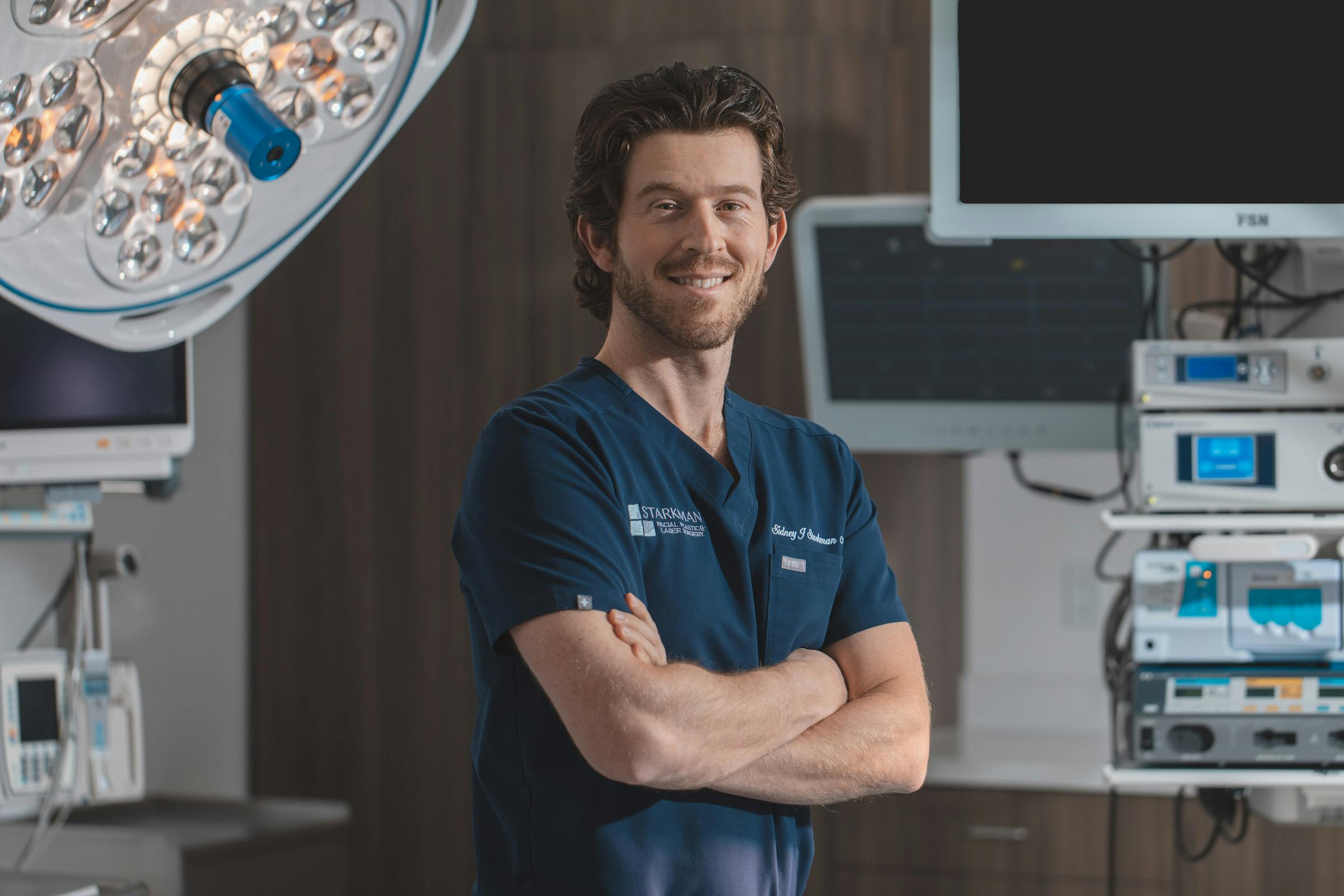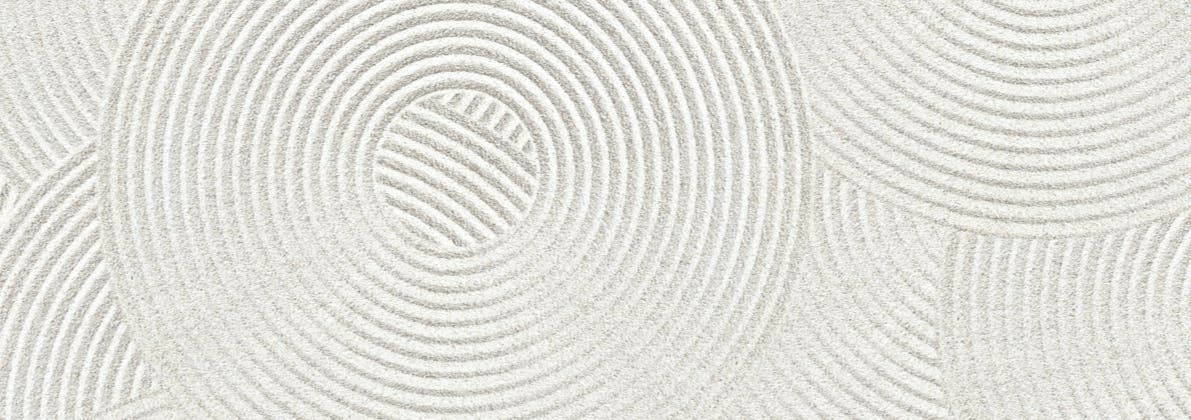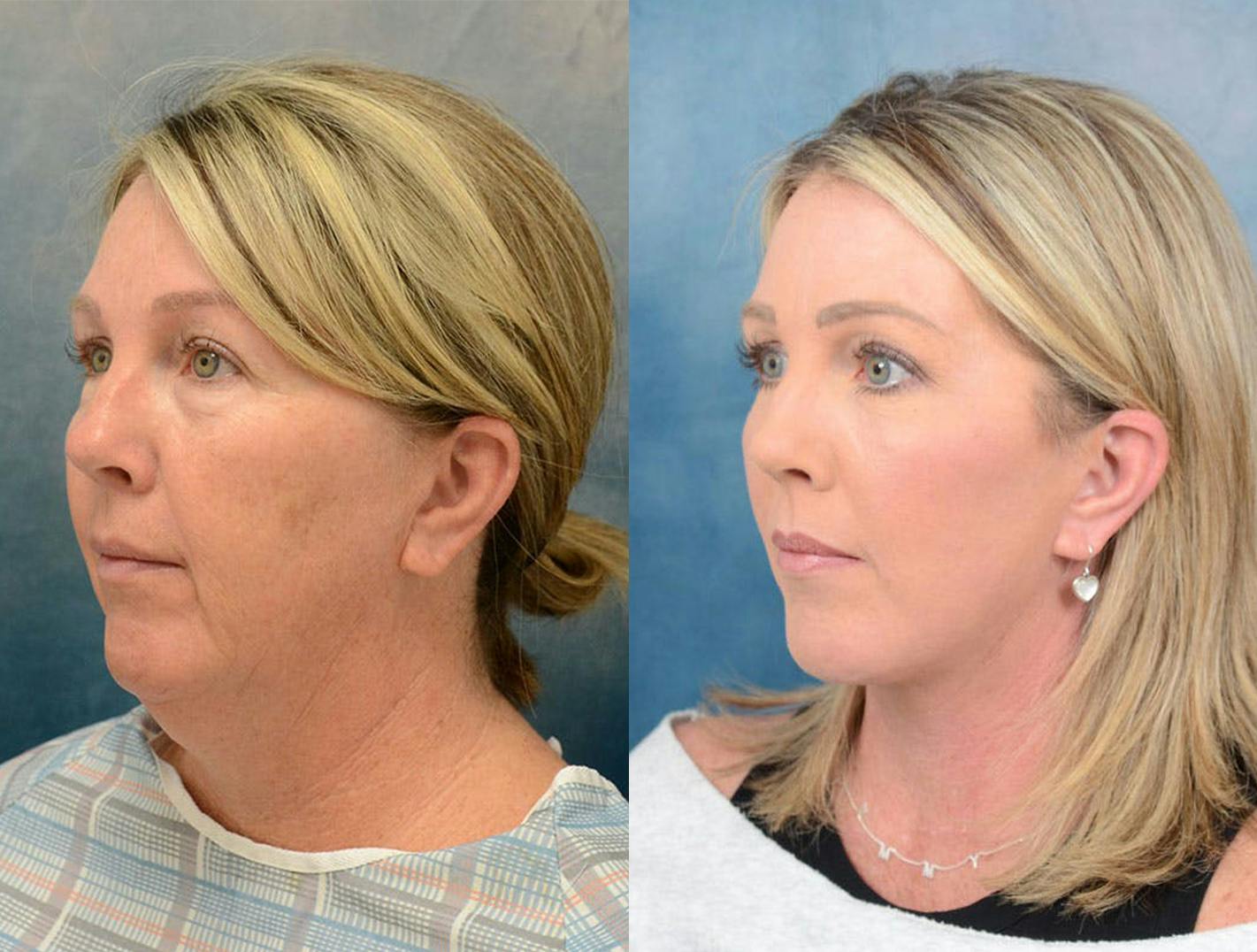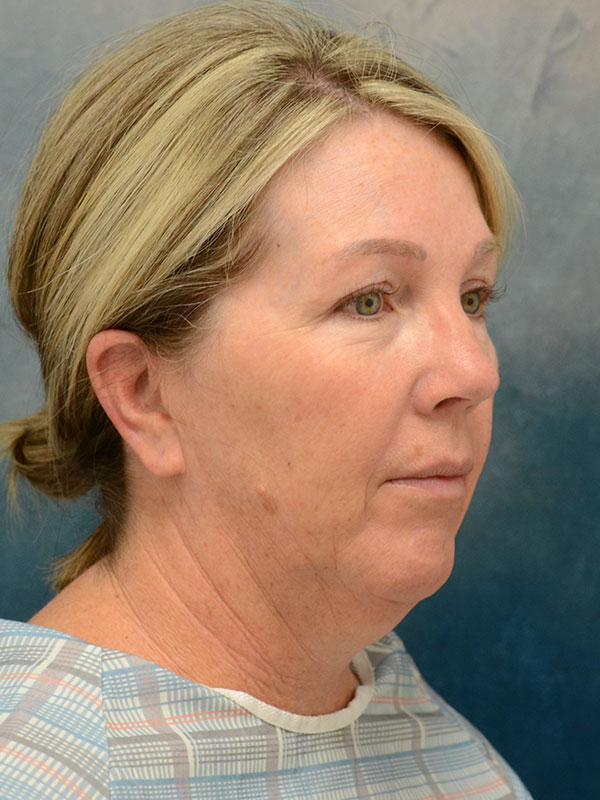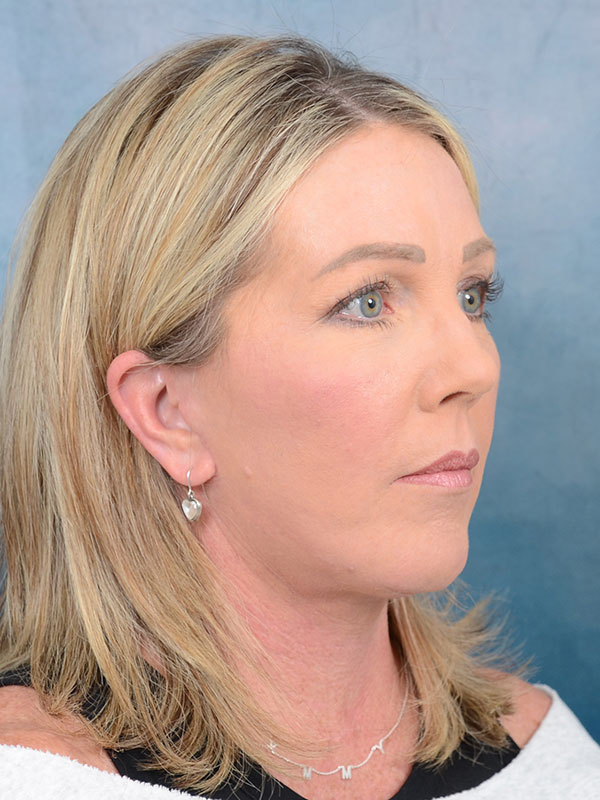As the years go by and the signs of age change the face, sagging jowls, sunken cheeks, and wrinkles can become a concern for those who want to turn back the clock and see their younger self in the mirror again. A deep plane facelift in Scottsdale is an answer to these concerns, as it achieves tighter, more elastic skin and defines the features. Of the different types of facelifts, the deep plane facelift is arguably the most effective, dramatic procedure. This facelift technique leaves the skin firmer, smoothes wrinkles away, contours the jawline, and more youthfully refines the facial features.
WHAT IS A SMAS FACELIFT?
The deep plane facelift moves beyond the superficial tissues to reposition some of the deep structures under the skin, called the Superficial Musculoaponeurotic System (SMAS). This firm and fibrous network runs under the skin but over the facial muscles, forming the framework of the face. When the SMAS is tightened, the results are significant and long-lasting.

What is the difference between the deep plane facelift and the SMAS facelift?
Both the deep plane facelift and SMAS facelift address the SMAS–the connective tissue and muscle layer beneath the facial skin. However, there are key differences in the way that the SMAS is lifted and the face is rejuvenated.
Many patients do not want the overdone or “pulled” appearance from a facelift. This pulled appearance comes from pulling or overly stretching the facial skin. In the United States, most plastic surgeons perform a facelift procedure by pulling on the layer beneath skin, called the SMAS. The SMAS is a sheet of strong fibrous connective tissue beneath the skin which attaches to the facial muscles underneath. A SMAS facelift pulls and stretches the SMAS layer using stitches to perform the facelift. A Deep Plane Facelift actually elevates the SMAS from the muscles underneath, and releases the ligaments that anchor the SMAS down near the folds around the mouth. This allows the SMAS to be “lifted” without tension, rather than “pulled” with a SMAS facelift.
A SMAS facelift can lift the face near the jawline and lower face, but it won’t give the same benefit as a Deep Plane Facelift to the jowls and folds around the mouth.
SMAS facelift:
What does it address?
- The SMAS facelift addresses the muscle and soft tissue closer to the ear, where the incisions are. However, it does not address the forward area of the jowls or the folds around the mouth as effectively as a deep plane facelift.
An important technical point
- The muscle and connective tissue layer that is lifted in a facelift are also anchored down to the face by four deep ligaments. In a SMAS facelift, these ligaments continue to hold down and anchor the forward part of the jowls and mouth folds.
How long does it last?
- The SMAS facelift is a superficial facelift, which lasts for a shorter period than the deep plane facelift.
What is the recovery time?
- The recovery time is shorter than the SMAS facelift recovery period. The deep plane facelift also appears more natural.
Risk of complications
- The risks of complications are similar to the SMAS facelift. Complication rates are directly related to the experience and specialization of the surgeon, regardless of facelift type.
Deep plane facelift:
What does it address?
- A deep plane facelift uses similar incisions to a SMAS facelift but it actually releases and effortlessly lifts the deeper muscles and connective tissues of the face in the area further forward near the jowls and folds around the mouth. The deep plane lift begins at the line drawn from the back of the jawline up to the corner of the eye, where the soft tissue starts to fall.
An important technical point
- A deep plane facelift releases the four ligaments that anchor down the muscle and connective tissue. This allows the face to be resuspended in a natural-looking, dramatic improvement. While the SMAS facelift can be thought of as “stretching” the face because parts are still tethered down by the ligaments, the deep plane facelift is a true anatomical “lift” and redraping.
How long does it last?
- A deep plane facelift lasts longer than the SMAS facelift, providing beneficial results for 10-15 years.
What is the recovery time?
- The deep plane facelift recovery time is shorter than the SMAS facelift recovery period. The deep plane facelift results also appear more natural.
Risk of complications
- The risk of complications is the same as the SMAS facelift. Complications rates are directly related to the experience and specialization of the surgeon, regardless of facelift type.
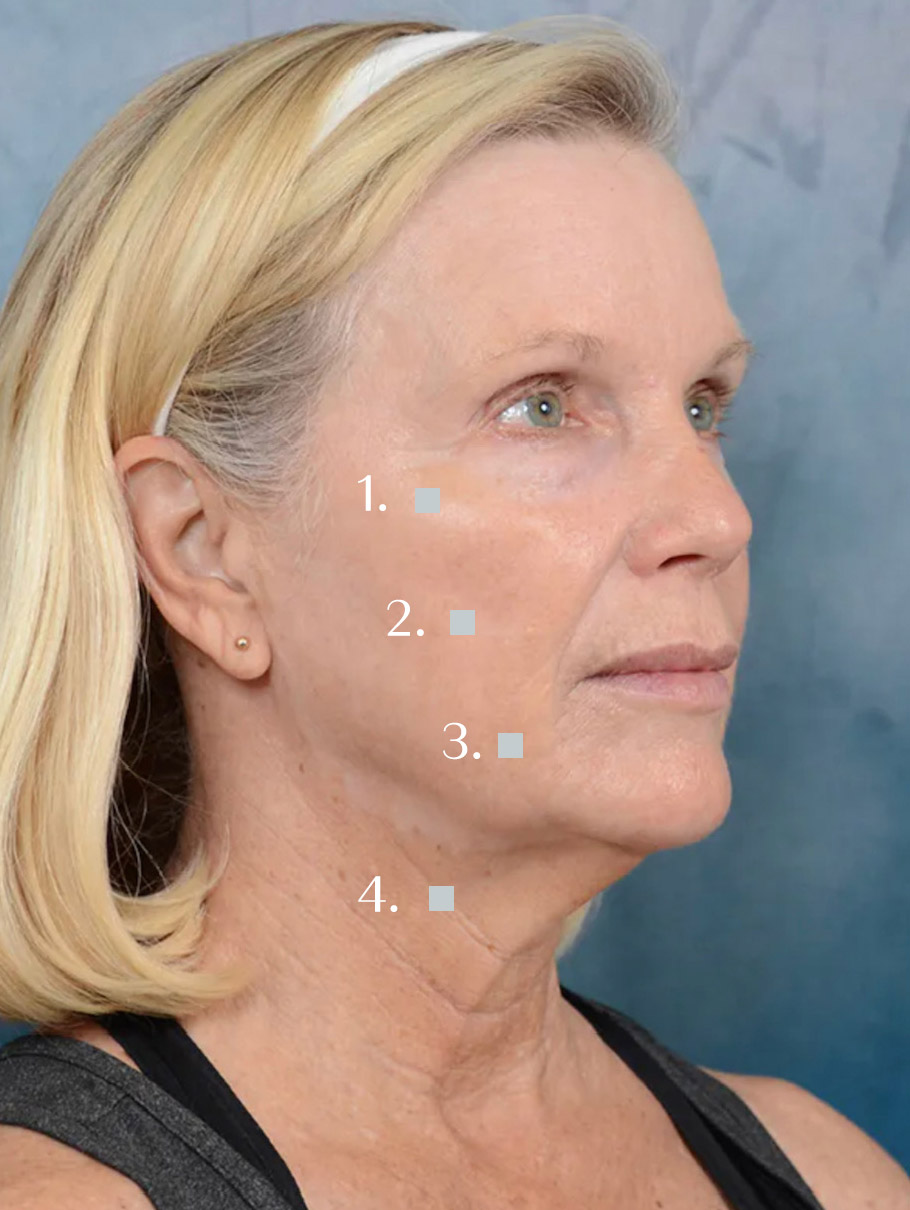
- Zygomatic Retaining Ligament
- Masseteric Retaining Ligament
- Mandibular Retaining Ligament
- Cervical Retaining Ligament
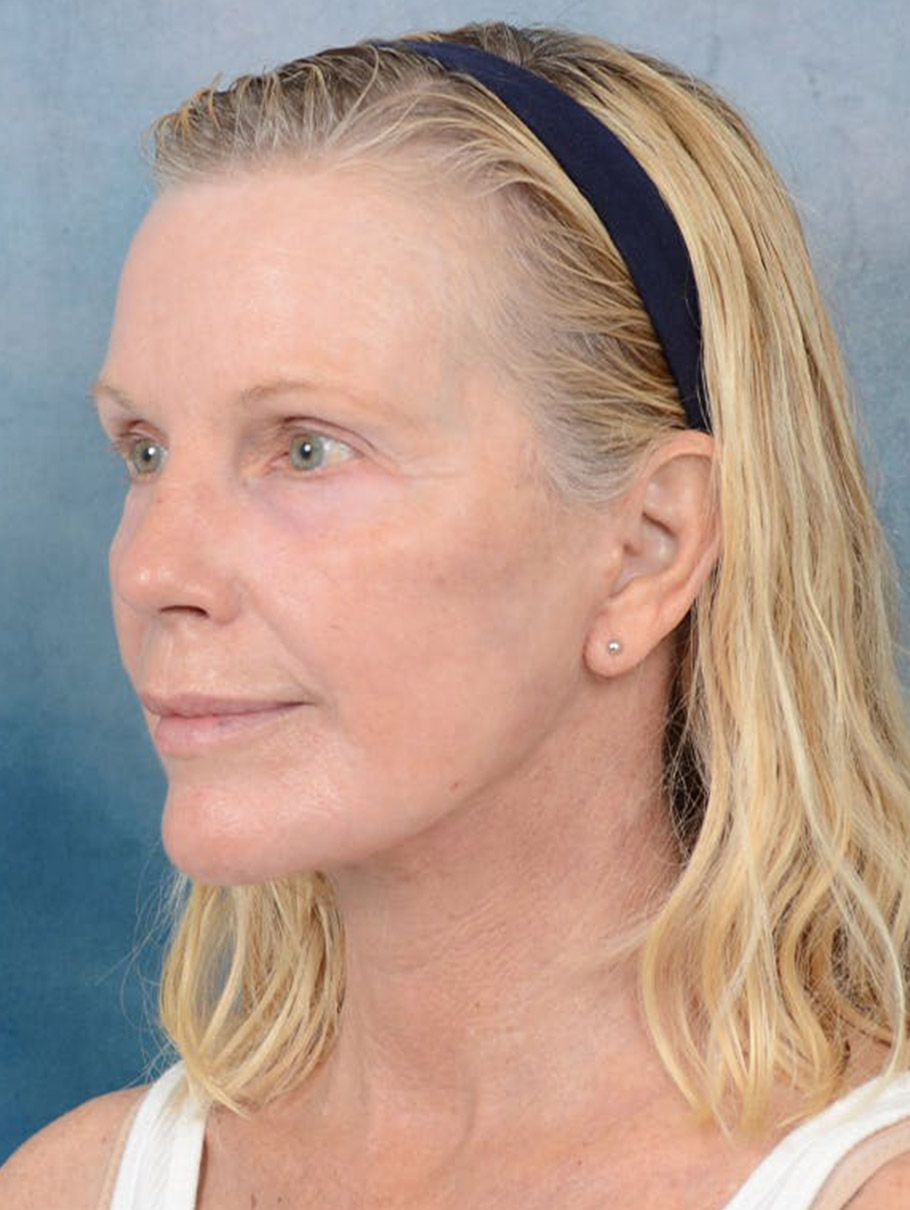
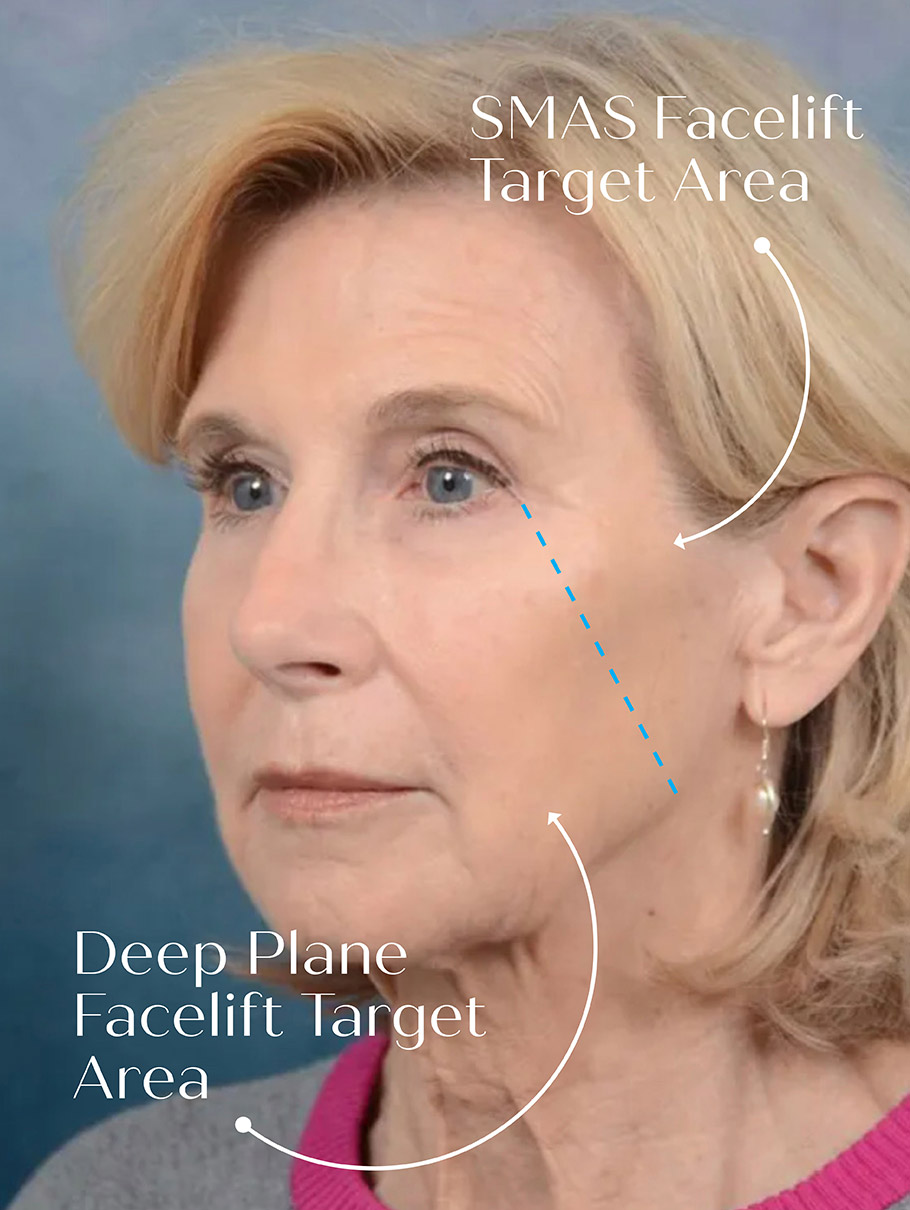
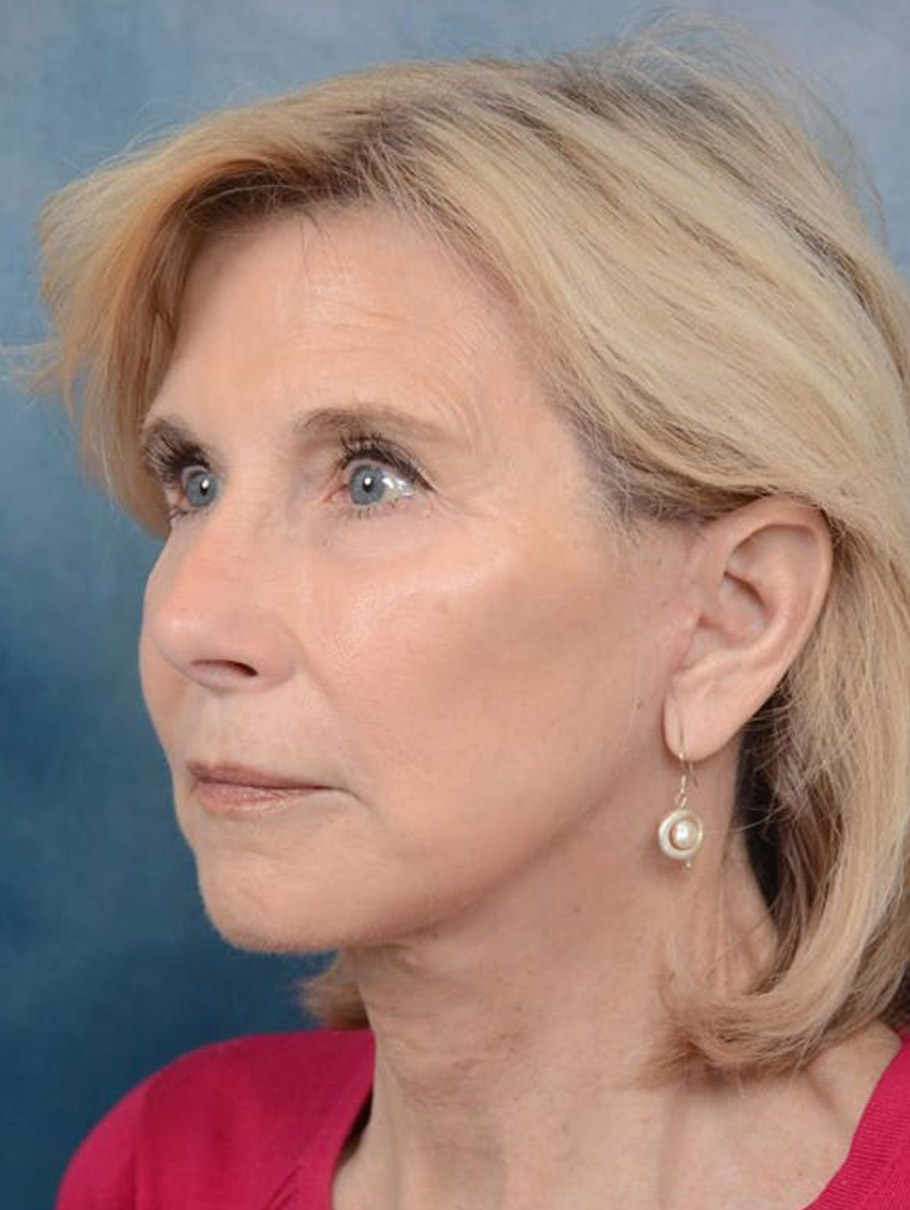
Who is a candidate for a deep plane facelift?
While younger patients can greatly benefit from a deep plane facelift in Scottsdale, the ideal candidate for a deep plane facelift is typically an older man or woman with more severe skin laxity, especially in the jaw and neck region, who would like to achieve a dramatically more youthful appearance. Candidates for a facelift should meet the following requirements:
- Are in good health generally and have no serious medical conditions
- Do not smoke
- Have facial or neck skin laxity or sagging, including prominent jowls
- Have a double chin or a poorly defined jawline
- Have sunken cheeks or other facial areas due to lost facial volume
- Have realistic expectations about what this procedure can achieve

Deep plane facelift benefits
A deep plane facelift is one of the most popular facelifts available because it provides outstanding results and benefits, including the following:
- Less skin trauma than other facelifts
- Greater definition to the jawline, neck, and cheekbones
- Lower likelihood of needing revision procedures
- More natural results than traditional facelifts
- Less chance of scarring
- Restores volume to your cheeks
- Provides smoother skin due to a boost in circulation
- Can correct eye drooping
- Nearly invisible incisions which heal quickly
- Provides a boost to confidence and self-image
- Lifts and firms more severely aging skin to rejuvenate the appearance
- Eliminates jowls or a double chin
- Tightens the skin
- Turns back the clock as much as ten years
- Lifts the brow and opens the eyes in a natural, youthful way
- Smooths or erases wrinkles and heavy lines
What happens during the deep plane facelift?
The first step of your preparation is a consultation with Dr. Starkman to discuss your facial concerns and aesthetic goals. Dr. Starkman will also examine your face and neck to evaluate the extent of skin laxity and assess other aspects of your features.
Dr. Starkman will walk you through all the details of the deep plane facelift procedure so that you’re prepared and confident about the next steps. He will ask you to stop smoking and stop taking any medications, vitamins, or supplements that thin the blood, as these can interfere with the healing process. As well as what you'll need to have available at home while you heal from your Deep Plane Facelift in Scottsdale.
On the day of your surgery, you will go under Deep I.V. sedation with local anesthesia before the incisions are made in the hairline and around the ear. These will be carefully made to ensure scarring is kept to an absolute minimum. Dr. Starkman will use these incisions to tighten and secure the layer of connective tissue and underlying muscles beneath the skin. He will release ligaments at a deeper level to lift and rejuvenate the skin, and reposition the layer of muscle and tissues. From there, he will carefully close the incisions.
Deep Plane Facelift Recovery
A deep plane facelift in Scottsdale allows the skin and muscle to remain attached to the underlying structures, which is why it causes less trauma than the SMAS facelift, resulting in a shorter recovery time.
The first few days:
- After your procedure, you will be able to return home with a friend or family member.
- Apply cold packs around your face and neck for two days to help reduce swelling.
- Sleep with your back and head elevated at 45-60 degrees.
- If drains were placed, they may be removed after the first few days.
- You may shower and wash your hair in two days, even if the drains are still in place.
The first two weeks:
- While you will mostly be resting and recuperating during this time, be sure to also walk around to keep your circulation active, which promotes healing.
- Continue to sleep in a slightly elevated position.
- Swelling will increase up to the fourth day after your surgery. From there, it will begin to ease.
- Do not drive until you are feeling very comfortable and can perform your usual driving functions. This usually takes patients about a week.
- Makeup may be applied after the first week.
Week 2:
- The bruising and swelling will be significantly improved.
- On average, patients generally take about ten days before they are comfortable going out in public to run errands or eat.
- You will be feeling better after two weeks. Patients are usually able to return to light work and activities around this time, although some may return sooner.
Week 3:
- Once the third week passes, you may resume moderate exercise.
- There will be a definite, marked improvement in swelling and bruising after the third week.
Weeks 4-6:
- Most patients can resume strenuous activities with an okay from Dr. Starkman. He will ensure your healing is complete and clear you for vigorous activity.

Additional References:
If you have any remaining questions about deep plane facelift surgery, take a look at some of the blogs that we have to help add further clarity. And reach out to our staff if you would like to set up a consultation with Dr. Starkman.
Unlock Your Beauty With a Face and Brow Lift
Your deep plane facelift specialist, Dr. Starkman
Dr. Starkman is a distinguished Double Board-Certified Facial Plastic Surgeon and deep plane facelift specialist. In addition to being a regular speaker on deep plane technique at national meetings, his practice performs over 200 deep plane facelifts each year, ranking in the top 5 in the country. Dr. Starkman served on a Deep Plane Facelift panel at the American Academy of Facial Plastic and Reconstructive Surgery annual meeting with other facial plastic surgeon experts, and he shares his expertise and experience on the deep plane facelift in 3-4 conferences per year.
Dr. Starkman is driven by attention to detail and is known for his compassionate, caring nature with patients. He considers it his honor to help patients look and feel their best with the most advanced aesthetic procedures available. With Dr. Starkman, patients can relax, knowing they are in the hands of the best of the best.
If you’re interested in learning more about the deep plane facelift, please contact us for a consultation.
